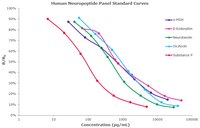Immediate effects of spinal manipulation on nitric oxide, substance P and pain perception.
Molina-Ortega, F; Lomas-Vega, R; Hita-Contreras, F; Plaza Manzano, G; Achalandabaso, A; Ramos-Morcillo, AJ; Martínez-Amat, A
Manual therapy
2014
Show Abstract
Previous studies have analyzed the effects of spinal manipulation on pain sensitivity by using several sensory modalities, but to our knowledge, no studies have focused on serum biomarkers involved in the nociceptive pathway after spinal manipulation. Our objectives were to determine the immediate effect of cervical and dorsal manipulation over the production of nitric oxide and substance P, and establishing their relationship with changes in pressure pain thresholds in asymptomatic subjects. In this single-blind randomized controlled trial, 30 asymptomatic subjects (16 men) were randomly distributed into 3 groups (n = 10 per group): control, cervical and dorsal manipulation groups. Blood samples were extracted to obtain serum. ELISA assay for substance P and chemiluminescence analysis for nitric oxide determination were performed. Pressure pain thresholds were measured with a pressure algometer at the C5-C6 joint, the lateral epicondyle and the tibialis anterior muscle. Outcome measures were obtained before intervention, just after intervention and 2 h after intervention. Our results indicated an increase in substance P plasma level in the cervical manipulation group (70.55%) when compared with other groups (p < 0.05). This group also showed an elevation in the pressure pain threshold at C5-C6 (26.75%) and lateral epicondyle level (21.63%) immediately after the intervention (p < 0.05). No changes in nitric oxide production were observed. In conclusion, mechanical stimulus provided by cervical manipulation increases substance P levels and pressure pain threshold but does not change nitric oxide concentrations. Part of the hypoalgesic effect of spinal manipulation may be due to the action of substance P. | 24674816
 |












